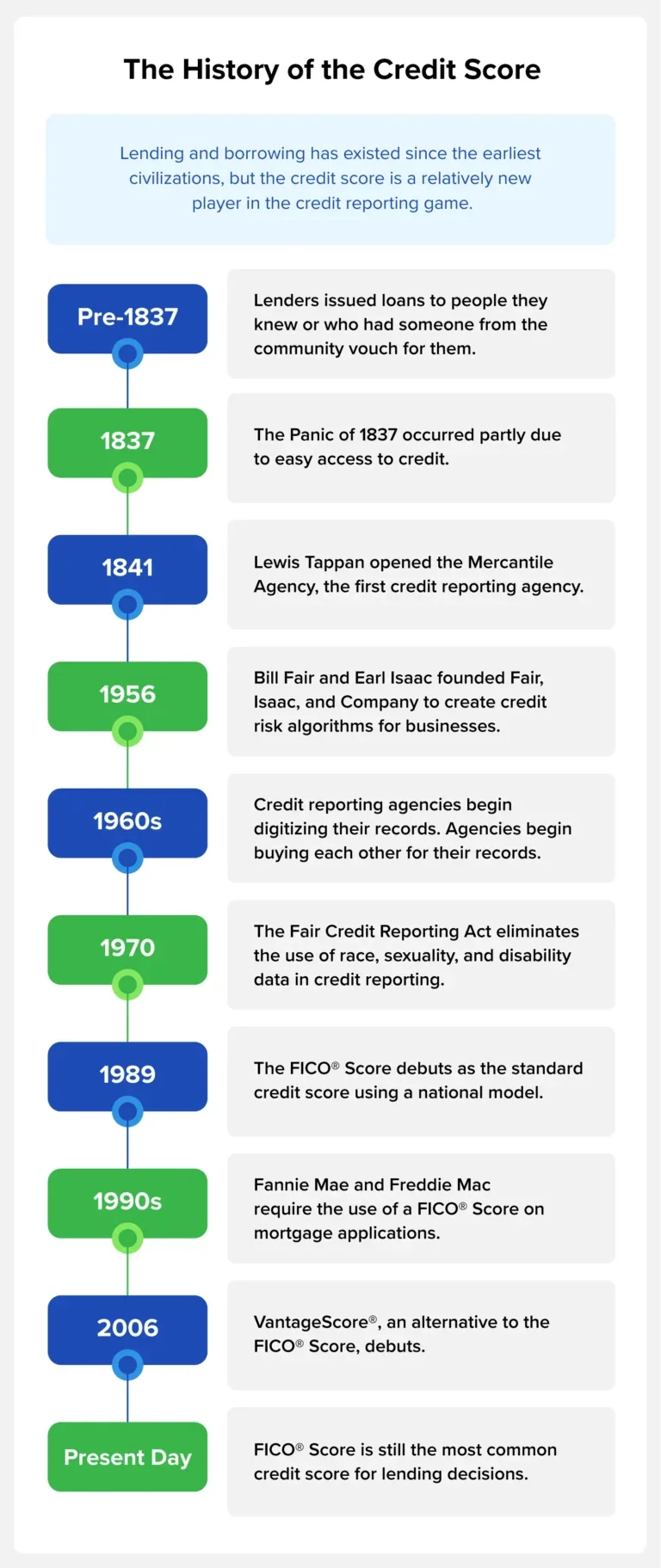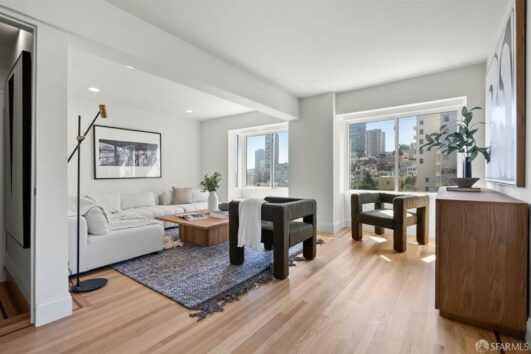Today is 101223. Of course you know, by looking ahead to the last day of 2023, that it will be 123123. By then, how many times do you think you’ll hear, “Due to a strategic decision, we’ve decided to…”? Those lenders looking at volumes for the next several months may be wary or even frightened. As if volumes aren’t scary enough, there are only 19 days until Halloween! Where are you going to be trick-or-treating this year? There are some good candidates out there that my cat Myrtle may fly into on her broomstick: Tombstone (AZ), Slaughter Town (LA), and Seven Devils Town (NC) are at the top of her list. The U.S. Census Bureau reports that there are roughly 128.5 million occupied U.S. housing units that could be potential stops for trick-or-treaters. If you’re at one of those and are expecting trick-or-treaters, there are 3,227 U.S. confectionery and nut stores and 726 U.S. formal wear and costume rental establishments. (Today’s podcast can be found here. This week’s is sponsored by NotaryCam, your partner for The Perfect Close! Ease of use, additional closing compliance, better borrower experience, reduced timelines, and cost savings, what is stopping you from getting on the RON train with NotaryCam? Listen to an interview with NotaryCam’s Suzanne Singer on why Remote Online Notarization (RON) hasn’t taken off like many would have hoped.)
Lender and Broker Software, Products, and Services
“Harness insights from the upcoming MBA Annual Convention and Expo by creating a meaningful strategy for innovation! It can be difficult to buy advancing industry technology anytime during the year, but this can be the best time to introduce a simple, sophisticated, easy-to-implement solution that will solidify your vision for 2024. Our recent blog, ‘Tapping Innovation to Ignite Change Automation for Mortgage Servicing,’ highlights smart workflow, what you’re missing if you haven’t embraced digitization, and how to leverage AI while avoiding the risk of emerging technology. These are important elements of surviving and competing in today’s complex and volatile mortgage landscape. Don’t miss the chance to embrace industry-proven innovation: Let CLARIFIRE® do your heavy lifting while you capture a better approach, better results, and better software… today!”
“We know your #1 goal for next week’s MBA Annual23 is finding the best Philly cheesesteak. So, what’s #2 on your list? If it’s streamlining your mortgage lending or unlocking cost-saving strategies, then this is your sign to schedule time with Certified Credit at MBA Annual23! Backed by the power of automation, Certified Credit’s Cascade solutions can speed up your time to close, improve borrower satisfaction, and standardize your operations. Their Cascade products automate your lead generation, VOE, UDM, borrower retention, and more. By delegating these tasks to technology, you can spend more time managing and growing your market share and less time on manual processes. Paired with milestone ordering, Cascade’s automation can take your operational efficiency to new heights with customized workflows for your unique operation. Make your solutions work for you, not the other way around with Certified Credit!
“We’re hearing that lenders are focusing on ramping up their tech stacks and (most importantly) focusing on the quality of the data powering that technology. Budgeting for 2024 has already begun, and you may be considering taking your company’s tech stack to the next level as part of next year’s activities. You need to look for a property data provider that delivers the most comprehensive data through the best channels to meet your unique business needs. That’s why we’re highlighting First American Data & Analytics. They’re more than just a data provider – they offer end-to-end solutions for the mortgage lifecycle. From detecting fraud and risk to providing valuation solutions, First American Data & Analytics enables lenders to make informed, data-driven decisions. If you’re ready to have access to the most accurate, complete, and current data, reach out to the team and get a free sample of their data sets.”
“Working to Provide the Best Homeowner Experience! Cenlar is more than just a mortgage subservicer. We strive to be our clients’ trusted partner each and every day. And a big part of that is how we care for our clients’ homeowners. A home is most likely someone’s largest asset. That’s why we are continuously evolving to provide the best homeowner experience. Whether that’s the regular cycle of onboarding, escrow, monthly payments and year-end or challenges facing homeowners like natural disasters, we are responsive, anticipatory and always caring. Let’s discuss how Cenlar can meet the mortgage servicing needs of your organization. Call 1-888-SUBSERV (782-7378) or visit here. We want to be your trusted partner, each and every day.”
FundingShield, the market leader in wire-fraud prevention, released its Q3-2023 Fraud Report showing 49.2 percent of transactions had deficiencies last quarter. Q3 yielded an all-time high for closing agent insurance coverage issues indicating more parties failed to maintain coverage per lender requirements. FundingShield’s CEO, Ike Suri, commented, “Tech-innovations that have been deployed by mortgage companies have helped bring down closing costs, however emerging technologies being introduced such as AI -driven microservices continue to add new vulnerabilities and gaps that can be exploited by threat actors. We expect this trend to continue to rise.” FundingShield Announced its Partnership with SitusAMC delivering integrated wire- fraud prevention services. FundingShield’s live ecosystem of escrow/title/settlement agent source bank data is the largest in the industry with 95 perecent+ coverage. Clients of SitusAMC’s warehouse lending platforms ProMerit and WLS now benefit from direct access to FundingShield’s cost-saving, risk-reducing, live ecosystem via API and data integrated solutions delivering bank account verifications, data integrity and counterparty compliance. Contact us.
VIPs get the best seats, the best service, and the best tech. From securitization to servicing, Wolters Kluwer gives you the VIP experience with integrated eMortgage technology solutions. Wolters Kluwer provides you with expert solutions to increase your lending efficiencies and support regulatory compliance efforts, at the right size and level of service for your business. From document preparation with eSign technology to eVault and eRecordation, Wolters Kluwer’s integrated suite of digital solutions is supported by decades of compliance expertise. Arrange a brief meeting with an expert today to learn more and become a Wolters Kluwer VIP. Or, meet with us at MBA Annual next week and drop by booth 903 to learn more.
The Consumer Finance Protection Bureau in the News
As noted in yesterday’s Commentary, the regulatory environment is something that lenders, and vendors, must deal with constantly. The CFPB suing Freedom Mortgage is an example of that. The CFPB is doing other things as well, like…
The CFPB announced threshold adjustments under TILA (Regulation Z) issuing a final rule amending the official interpretations for Regulation Z, which implements the Truth in Lending Act (TILA). These adjustments are applicable January 1, 2024, consistent with relevant statutory or regulatory provisions.
The CFPB announced it is beginning a rulemaking process to remove medical bills from Americans’ credit reports. The CFPB outlined proposals under consideration that would help families financially recover from medical crises, stop debt collectors from coercing people into paying bills they may not even owe, and ensure that creditors are not relying on data that is often plagued with inaccuracies and mistakes.
The CFPB Advisory Opinion (AO) clarifies that certain fees charged by banks to fulfill consumer information requests violates the Consumer Financial Protection Act (CFPA). The CFPB views these fees as impeding a consumer from exercising its right to receive account information in a timely manner. The CFPB has already addressed surprise overdraft, insufficient (NSF), and return check fees in an October 2022 compliance bulletin. In a 2021 report, the CFPB stated that overdraft and NSF fees, periodic maintenance fees, and ATM fees represented about 83 percent of all checking account fees. The AO would eliminate fees that represent a portion of the other 17 percent of checking account fees.
Capital Markets
For over two decades, MCT has been a leading source of innovation for the mortgage secondary market. From architecting modern best execution loan sales to launching the most successful and advanced marketplace for mortgage-related assets, MCT continues to revolutionize how mortgage assets are priced, locked, protected, valued, and exchanged. MCT Marketplace is liquidity. We connect buyers and sellers in a unique, digital auction regardless of counterparty approval status. Through our patent-pending technology, sellers have access to the most robust set of take-outs, while buyers are seamlessly connected to the largest community of sellers in the U.S. Join MCT’s Phil Rasori, Paul Yarbrough, and Justin Grant on October 25 at 11 A.M. Pacific for a practical guide to maximizing your loan trading profits during a one-hour webinar. You’ll leave ready to analyze performance and make actionable changes to boost profitability.
Striking workers, whether they are writers or MGM workers in Las Vegas or, now, UAW Ford truck workers walking out on Wednesday in Tennessee, negatively impact the economy. And that can slow things down, indirectly doing the Fed’s work for it. Interestingly, rates have indeed come down. After strong payrolls to close last week sent the benchmark U.S. 10-year Treasury note (though we discussed on yesterday’s weekly Mortgage Matters show how a better benchmark is the 5-year or 7-year) 20 basis points higher to 4.78 percent and the 30-year yield climbing 24 basis points to 4.94 percent, the highest level since September 2007, rates have dropped this week in response to both geopolitical turmoil in the Middle East and dovish remarks from Federal Reserve officials.
Loan originators know, however, that mortgage price makers didn’t really chase the rally, choosing to leave recipes as is. The narrative has shifted from how high rates need to go to how long rates need to be kept at restrictive levels for inflation to fall to an acceptable level for the Fed. The Minutes from the September FOMC meeting were released yesterday and revealed that U.S. Federal Reserve policymakers agreed that policy should remain restrictive for a while to come, though noting that the risks of overtightening had to be balanced against keeping inflation on a path toward 2 percent. As a result, the probability of a 25-basis points rate hike at the November 1 FOMC meeting slid to below 10 percent.
Are markets getting ahead of the Fed again? The market looked past a view from those FOMC Minutes that a majority of participants judged one more rate hike would likely be appropriate at a future meeting. That was despite learning yesterday that inflation at the wholesale level (the change in the price of raw or intermediate inputs as they enter the production process) is rising faster than expected, reflecting rising commodity prices, particularly energy (approximately 40 percent of the increase was attributed to gasoline). The Producer Price Index rose 0.5 percent month-over-month and 2.2 percent year-over-year. Before we view the report too negatively, it’s much better than the 11.7 percent annual rate that PPI hit in March 2022. Markets are looking for no hike at the upcoming Fed meeting knowing that the jump in long-term rates since the last FOMC meeting has effectively done the Fed’s rate hike work for it, as several Fed officials have alluded to in recent remarks.
Today’s economic calendar began with the all-important Consumer Price Index report for September (+.4 percent versus +.3 expected; core +.3 percent; up 4.1 percent year over year) and weekly jobless claims (209k, so employment is still strong; 1.702 million continuing claims). Treasury then announces the auction sizes for next week’s reopened 20-year bonds and 5-year TIPS before auctioning $20 billion reopened 30-year bonds, and we’ll receive remarks from Atlanta Fed President Bostic and Boston Fed President Collins. We begin the day with Agency MBS prices roughly unchanged from Wednesday evening and the 10-year yielding 4.59 after closing yesterday at 4.59 percent.
Employment
Are you settling for a process that isn’t working, leaving you frustrated, tired and unmotivated? Would you benefit from having the same team on every loan you send through the pipeline? To deliver the best borrower experience, Atlantic Bay Mortgage Group utilizes a one-team approach which means our Mortgage Bankers work with the same Underwriter, Processor, and Closer on every loan. And that same one-team approach has led to an overall Net Promoter Score of 96.84 percent! “Having one team has been super beneficial. Being able to communicate with certain people and knowing who’s covering and handling specific items has helped me ensure seamless transactions.” – Matt Bullins, NMLS #1805439. From production to leadership, opportunity is always around the corner when you work with the team National Mortgage News named the “Best Large Mortgage Company To Work For” in 2023. Request a confidential phone call to learn more about Atlantic Bay.
“First Community Mortgage (FCM) is on an impressive growth trajectory, having tripled its sales staff in the past 15 months. Despite challenging market conditions, FCM continues to thrive and expand. As a federally chartered lender, FCM loan officers can originate in 48 states, unlocking a world of opportunities. We understand that transitioning to a new opportunity can be overwhelming, which is why we provide a dedicated transition team to support you during your crucial first 120 days, ensuring a seamless and successful journey. FCM offers an ideal blend of flexibility and support, providing you with an economic advantage that goes beyond what you would typically receive. Our commitment to enhancing your experience is evident in our substantial investments in technology, aimed at simplifying your workload and maximizing your potential for business growth. Come along with us and discover the possibilities. Contact Bret Head or visit us online.”
“In a time when loan production has never been more challenging, Planet Home Lending stands out in new product innovation. Our novel products are attracting MLOs and branches eager for a secure, progressive future in the mortgage industry. Fortify your career and market position by moving to the Top 10 lender that values professionalism and innovative thinking. Contact VP of Talent Peter Briggs or 435-709-6287. All inquiries will be held in strict confidence.”
A 25-year-old wholesaler has secured capital for growth and expansion, and has begun the hunt to acquire/merge some non-QM talent and/or non-QM companies into the existing, well-run, well-capitalized institution. This is a stand-alone company that doesn’t need capital for typical organic growth and sustainability but is searching for an ongoing group(s) to add. Please send Chrisman LLC’s Anjelica Nixt a confidential note (principals only) for forwarding to the CEO of the wholesaler, please specify this opportunity.









